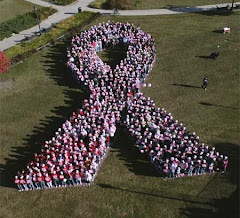For many years cancer survivors have worried about, joked about, and been frustrated with the mental cloudiness they notice before, during, and after chemotherapy. We don't know its exact cause, but this mental fog is commonly called chemo brain.... Even though chemo does not seem to be the only cause, studies have suggested that up to 70% of people who get chemo will notice symptoms of chemo brain.Here are two very recent examples of why it may be a good thing that I'm not working while I'm in treatment:
Yesterday, as I was driving through Englewood on my way to a check up (and what turned into a very long day of transfusions) I thought to myself, "Englewood sure has a lot of... what are they called? Car stores? No, that sounds stupid. What the hell are they called? Auto shops? No, that's not right. What are they???" And for a minute I could not find the right word no matter how hard I squinted. Finally, my brain cells teased back the word, "dealers!" which I shouted to myself. My next thought was, "Oh boy. I'm in trouble."
Today I pulled out a can of what I thought was organic pumpkin soup from my favorite store, Trader Joe's. I wasn't terribly hungry, but the clock said it was time to eat. I heated up the soup, thinking, "This is pretty thick," only to then realize that the can said "organic pumpkin," not "organic pumpkin soup." So now a I had hot pumpkin in a bowl. What to do? I decided to force the pumpkin soup idea, and I added a bunch of almond milk. Too bland. I added a bunch of curry powder. Curry pumpkin soup sounds yummy. Too bitter. I added blue agave nectar for sweetness. Too weird. So I added a bunch more spices. No telling what I pulled out of the cupboard. By now I had volumes of this stuff, but I was determined not to let Chemo Brain win. The final mixture was edible, but the best part of the meal by far was the crackers I added at the end.
This reminded me of another squash debacle I had when I was in my mid 20s. I had just moved by myself to San Francisco and was amazed by all the new and odd looking produce. Growing up, family meals never really ventured too far out of the box. When I got to California, there must have been a dozen different types of squash (and artichokes totally baffled me). I picked one and found a recipe for stuffed squash. It said to bake the squash whole and then cut it to add the filling. As it was baking, it smelled strange. I called my mother in Scottsdale, described the "squash," and was crushed to learn that I had just baked a honeydew melon. There was just no way to salvage hot melon.
I think this was when I gave up on recipes and developed my skills as a Warmer/Arranger. I follow my rather strict anti-cancer diet by finding healthy, yummy foods at Trader Joe's, Whole Foods and sometimes restaurants, warming them up and arranging them tastefully on my plate. It's a system that has worked quite well for me ever since the hot melon incident. Until today.
I had an impressive case of Chemo Brain after I received 8 completely unnecessary rounds of CMF chemotherapy in late 2000 (see January 17, 2010 post). It improved with time, but my memory is still pathetic. Now I'm told that leukemia cells can hang out undetected in the central nervous system, and because of this, the chemo that I'm receiving, Ara-C, is specifically designed to cross the blood brain barrier. Great. I still have three rounds of very high dose Ara-C to get through. Good thing I have a GPS. Now if I can only manage to locate basic vocabulary words and read food cans.... Hopefully, this blog won't turn into gibberish.
Never mind the fact that I baked a melon in 1985 and I wasn't diagnosed till 2000. I intend to use Chemo Brain as justification for all present and future humiliating fumbles. Why? Because science has my back!
Kathy
CANcer + HEALth = CAN HEAL

.bmp)